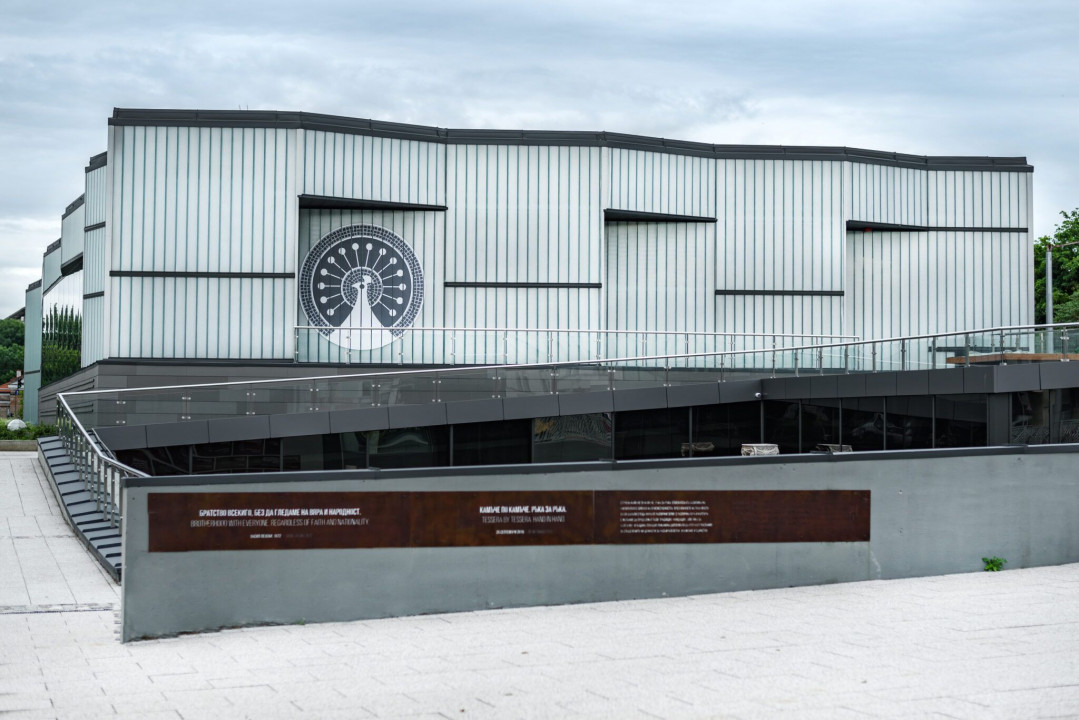
Author: Petya Todorova
In the early 1980s, the builders of a new central boulevard in Plovdiv came across ancient mosaics of birds. Nowadays, one can hardly imagine that four decades later, the largest early Christian worship house in Bulgarian lands would be rebuilt, even if partially.
After being hidden for almost 40 years, sitting right across the catholic cathedral St.Ludwig, today proudly stands a modern museum, which tells stories of long-extinct cults. Mute witness to an ever-changing city with ancient history and a plethora of original names- Pulpudeva, Philippopolis, Trimontium, Puldin, Filibe, Plovdiv- this enchanting spiritual temple brings us back to the beginning of Christianity as an organized religion.
The Episcopal Basilica of Philippopolis is now open to visitors. The interest is astonishing – on the festive May 24 (the Cyrillic language celebration day), I am waiting in a long queue as I’m one of the excited visitors, bearing the hot May sun. The pandemic measures create a slight tension amongst the guests yet people are patient and kind.

The dimensions of the Basilica are impressive – nearly 90 m in length and 36 m wide. Nevertheless, the most impressive part of it is the mosaics that cover its ground in double layers. The friendly guide tells us that the first layer dates from the end of the IV century and combines two types of mosaics, made in various techniques. It is speculated that due to the heavy earthquake, some of the parts have sunk, which resulted in the second layer of colorful stone. The basilica is especially famous for its bird images, which date back to the 6th century. You will be able to see them on the first floor, while the lower, earlier, later of the mosaics is on the second level of the temple.
Information about the artefacts is also available on interactive panels, which tells us that during this time, in Philippopolis, there was an atelier especially for creating mosaics and the locals were the only ones in the Roman Empire that had a verb “making mosaic”.
Among the figures depicted in the mosaic composition, beautiful birds have the most significant presence. In particular, the peacock, which is associated with immortality, takes a centre stage in the exposition, right in the main lobby of the museum. In the early Christian years, those birds have a very symbolic meaning, leading some researchers to believe that the floor of the Basilica represents the image of the Garden of Eden.

The majestic building was built on the foundations of an ancient pagan temple, the walls of which are exposed and easy to notice. Many of its architectural constructions like its columns and architraves were used in the second reconstruction, a practice that was very popular in Europe during the Middle Ages for faster and cheaper construction. For three centuries, this lavishly decorated temple was the heart of Philippopolis. It was abandoned in the early Middle Ages, later the necropolis appeared on some of the remaining ruins.
The chronology of this long historical period can be depicted using hundreds of artefacts in the exposition. Modern technologies are being used, to paint a better visual story for the visitors. For example, on the “wall of shadows” are projections of the basic human activities at the time. Virtual reality devices show an impressive artistic reconstruction of the Basilica, which reveals in detail the architecture and atmosphere of its interior. Modern techniques are used also in the zone for kids, the “The Discovery Area”, designed by the team of “Muzeiko”.
The monumental Episcopal Basilica of Philippopolis stands proud as a true relic. Behind every single discovered and newly designed detail of the exhibition, stands endless hours of work from a dedicated team of archaeologists, restoration specialists, historians, epigraphists, anthropologists, numismatics, and ornithologists. As a grand scale and investment, the efforts to revive and give life to this exposition, are unparalleled in Bulgarian history. Words cannot explain its magnificence, you just have to visit and feel its greatness for yourself.
Photos: Mila Penkova